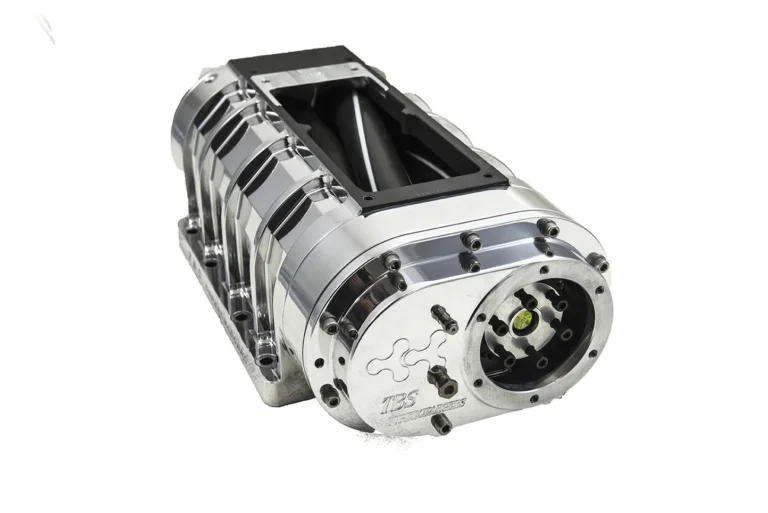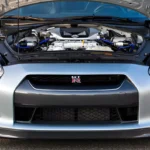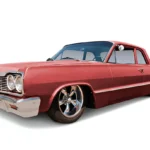When it comes to high-performance engines and classic car modifications, the 1969 871 blower system is a name that commands respect. Originally designed for large diesel engines, this supercharger has found a beloved place in the hearts of hot rodders and muscle car enthusiasts. But what makes the 871 blower so special? Let’s dive deep into the history, mechanics, and sheer power of this iconic supercharger.
Evolution of the 1969 871 Blower
The story of the 871 blower begins in the industrial world, where it was initially designed for diesel engines. The robust and efficient design quickly caught the attention of automotive enthusiasts. By the late 1960s, the 871 blower had transitioned into the realm of gasoline engines, becoming a staple in the world of hot rods and muscle cars. This transition was driven by the blower’s ability to significantly boost power and performance, qualities highly valued in the performance car community.
Technical Specifications of the 1969 871 Blower
Understanding the 871 blower requires a look at its technical details and components:
- Blower Case: Typically made from aluminum, the blower case houses the internal components and is designed to be both lightweight and strong.
- Rotors: Inside the case, two intermeshing rotors compress and push air into the engine’s intake manifold. These rotors are the heart of the blower, creating the boost that supercharges the engine.
- Drive System: The blower is driven by a belt connected to the engine’s crankshaft. This system includes pulleys and belts designed to handle high RPMs and increased stress.
- Intake Manifold: A specially designed intake manifold mounts the blower on the engine and ensures proper air distribution to the cylinders.
- Fuel Delivery: Whether using carburetors or electronic fuel injection, the fuel system must be compatible with the blower to maintain the correct air-fuel mixture.
Installation Process
Installing an 871 blower is not a task for the faint-hearted. Here’s a step-by-step guide:
- Pre-Installation Considerations: Ensure your engine is capable of handling the increased power and pressure. This might involve upgrading internal components such as pistons, rods, and the crankshaft.
- Removing Existing Components: Start by removing the existing intake manifold, carburetor, and any associated components.
- Mounting the Blower: Install the specially designed intake manifold for the blower, then mount the blower itself, ensuring all bolts are torqued to specification.
- Setting Up the Drive System: Attach the pulleys and belts, making sure they are properly aligned and tensioned.
- Fuel System Setup: Install the appropriate carburetors or EFI system, ensuring it can handle the increased airflow.
- Fine-tuning: Adjust ignition timing and fuel delivery to optimize performance and prevent issues like detonation.
Performance Benefits of the 1969 871 Blower
What can you expect once you have an 871 blower installed? The benefits are substantial:
- Power Increase: The 871 blower can significantly boost your engine’s horsepower, often by 50% or more. This means faster acceleration and higher top speeds.
- Improved Throttle Response: The blower ensures a more immediate and powerful response when you press the gas pedal, enhancing the driving experience.
- Comparison with Other Superchargers: Compared to other types of superchargers, the Roots-type 871 blower is known for its reliability and consistent performance across a wide RPM range.
Maintenance and Troubleshooting
To keep your 871 blowers running smoothly, regular maintenance is essential:
- Lubrication: Regularly check and maintain the lubrication of the blower’s moving parts to prevent wear and tear.
- Belt Tension: Ensure the drive belts are correctly tensioned to avoid slippage and potential damage.
- Inspecting Rotors and Seals: Regularly inspect the rotors and seals for signs of wear or damage, replacing parts as necessary.
- Common Issues: Problems such as belt slippage, leaks, and rotor wear are common but can be addressed with regular maintenance and timely repairs.
Popular Applications in Classic Cars
The 871 blower system found a home in many classic cars, particularly those from the muscle car era. Here are a few notable examples from 1969:
- Chevrolet Camaro: Known for its aggressive styling and performance, the Camaro benefits greatly from the added power of an 871 blower.
- Ford Mustang: The iconic Mustang, already a symbol of American muscle, becomes even more formidable with a supercharged engine.
- Dodge Charger: The Charger, with its bold design and powerful V8 engines, is another classic that pairs perfectly with the 871 blower, turning it into a true beast on the road.
Modern Upgrades and Compatibility
While the 871 blower is a classic design, it can be paired with modern upgrades to enhance performance:
- Enhanced Fuel Systems: Modern EFI systems provide more precise fuel delivery, improving efficiency and power.
- Cooling Systems: Upgraded cooling systems can help manage the increased heat generated by a supercharged engine.
- Strengthened Engine Components: Modern materials and engineering can provide stronger, more durable internal components to handle the increased stress.
Conclusion
The 871 blower system is a legendary component in the world of high-performance engines. Its roots-type design and substantial power increase have made it a favorite among hot rodders and muscle car enthusiasts. Whether you’re looking to restore a classic 1969 muscle car or push your engine’s performance to new heights, the 871 blower offers a blend of power, reliability, and iconic style that’s hard to beat. So, if you’re ready to unleash the beast within your engine, the 871 blower might just be the key.
Frequently Asked Questions (FAQs)
Can I install an 871 blower on any engine?
Not all engines can handle the increased power and pressure. It’s essential to ensure your engine is built to withstand the additional stress.
How much horsepower can an 871 blower add?
The exact increase depends on the engine and other modifications, but a 50% increase in horsepower is not uncommon.
Is the 871 blower street legal?
This depends on local regulations. In some areas, modifications such as a supercharger may not be street-legal.
What kind of maintenance does an 871 blower require?
Regular lubrication, belt tension checks, and inspections of rotors and seals are essential to maintain performance and longevity.







